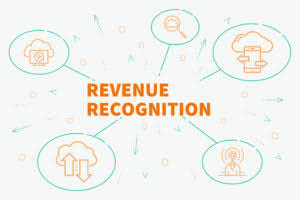The tool will calculate the maximum purchase price you could accept to achieve your profit goal. Therefore, the business knows they need to keep fixed costs at £150,000 or under to attain their target profit. The business already knows their selling price is £150 per unit, their variable costs are £70 per unit and they expect to sell 5,000 units over the year. The CVP method finds the break-even sales point when the profit is set to zero. Instead of setting the profit to zero, the management can use the desired profit amount and follow the same steps to calculate the desired output quantity.
PRODUCTION:
The total fixed costs apportioning will change as the volume of production changes. Operating margin is calculated using information from your business’s income statement, such as the company’s revenue, operating expenses and cost of goods sold (COGS). Understanding EBITDA and gross profit is essential for anyone investing in stocks or analysing businesses.
- For example, a well-designed custom pen along with other corporate stationery can play a key role in promoting brand awareness, hence helping companies to achieve target profits.
- The company wants to earn a profit of $80,000 for the first quarter of the year 2012.
- It is the next step for the organizations after the break-even platform where the revenue from the sales is only able to cover fixed & variable overhead without any profit.
- By eliminating the effects of financing decisions, tax policies, and accounting practices, EBITDA provides a clearer picture of how efficiently a company generates earnings from its core business activities.
- A common approach to achieving this desired profit is through the budgeting process.
- The second method is to first calculate the contribution margin and then set a target profit.
This tool will calculate the prices required to reach the target profit.
The selling price needs to be increases from 15.00 to 16.13 in order to achieve the target profit of 15,000 with unit sales of 8,000. Finally using the formula below the number of units it needs to sell to achieve the target profit level is as follows. The target profit approach is a useful tool in achieving the financial objectives of the business.
What is Target Profit and How is it Calculated?
As mentioned earlier, there are several methods to calculate it for a business. The CVP method is an accurate and widely used method that can be used in single or multiple products scenarios effectively. In the final step, all figures accounting coach bookkeeping are placed in the following formula to calculate this profit.
The business wants to know how many units they need to sell annually to achieve this target profit. Target profit is usually determined as part of a business’s budgeting process, and is monitored over the specific period against the actual outcomes. So the business needs to sell 9,091 units in order to make the targeted profit of 15,000. Here are a few advantages of using the target profit approach as compared to the arbitrary budgeting method. Target profit and cost-volume-profit analysis combined can offer useful information to the management for decision-making in the long term.
How does operating margin compare to other financial metrics?
This helps prevent overambitious targets that may not be feasible given the current market conditions or operational constraints. By setting realistic target profit levels, businesses can maintain financial stability and make strategic decisions that support long-term growth. Calculating target profit is crucial for businesses to determine the amount of sales needed to reach a specific profit goal.
A higher EBITDA margin suggests a company has strong operational efficiency, making it a potentially good investment. By eliminating the effects of financing decisions, tax policies, and accounting practices, EBITDA provides a clearer picture of how efficiently a company generates earnings from its core business activities. The EBITDA full form, Earnings Before Interest, Taxes, Depreciation, and Amortisation, indicates that it is a widely used metric to assess a company’s profitability at an operational level. Such statements are subject to risks and uncertainties which could cause the company’s results to differ 21 problem-solving products that’ll make life less annoying 22 words materially. The most important risks and uncertainties are described in Item 1A of the Company’s Form 10-K for the fiscal year ended February 3, 2024.
The target profit is determined by considering various factors, including total revenue, gross margin, and fixed cost. Target profit analysis is about finding out the estimated business activities to perform to earn a target profit during a certain period of time. Among these activities, management is especially interested to find out the sales volume required to generate a target profit. It aids in strategic decision-making and financial planning for both new and established enterprises. Unit variable costs and production volume will remain constant and in proportion as the production level changes.
- However, budgets are notoriously inaccurate, and become more inaccurate the further into a budget year that you go.
- For the evaluation of the revenue required following information is made available.
- The first step is to determine the profitability of each product and rank them accordingly.
- He has worked as an accountant and consultant for more than 25 years and has built financial models for all types of industries.
- The total fixed costs apportioning will change as the volume of production changes.
Based on last year’s volume numbers, the business forecasts to deliver 20 services over the year. The second step is to draw the graph with the cumulative sales showing on the x-axis and the profit on the y-axis. The methods discussed above are useful for a single-product facility or a manufacturing facility with a limited number of products. However, in many cases, there are several similar products manufactured in the same facility. The company wants to earn a profit of $80,000 for the first quarter of the year 2012. And, it is possible to use the Break-even Chart to find out the level of sales that the business needs to earn a certain amount of Target Profit.
Attention Investors
The management can then add the desired profit that comes through excess of the break-even point sales. Let us discuss this desired profit concept and different methods to calculate it. Notice that to get target profit formulas or equations, we have just included the target profit to break-even point formulas. If the quantity needed to be produced and sold in order to earn the specific Target Profit is a decimal number such as 64.49, then the value should be rounded up to 65. The information contained herein is shared for educational purposes only and it does not provide a comprehensive list of all financial operations considerations or best practices. Our content is not intended to provide legal, investment or financial advice or to indicate that a particular Capital One product or service is available or right for you.
In the business world, strong brand is one of the core driving forces of corporate profitability. For example, a well-designed custom pen along with other corporate stationery can play a key role in promoting brand awareness, hence helping companies to achieve target profits. The management of a company named ABC Inc. after finalizing the target profit to be achieved in the next quarter wanted to equate the sales revenue that would be needed. For the evaluation of the revenue required following information is made available. You can even see if you’re pre-approved with no impact on your personal credit score. What’s more new rules for reporting tax basis partner capital accounts useful is to learn how your business compares to the competition within your industry.
The break-even analysis is crucial for the management to set target income or target profits. Financial projections involve determining what level of profit you want from a business. However, profit is often assumed to be the end result, a natural consequence of setting revenue and expense levels in the financial projections.
This way, you can get a better picture of how efficiently your business is generating profits from sales. Generally speaking, a higher operating margin is better, as it indicates that your company is operating more efficiently and generating more profits. EBITDA is a primary metric for determining a target company’s intrinsic earning capacity.
It also helps you understand how much profit you’re keeping from every sale after covering all your operating expenses. When seeking the definitive figure that represents a company’s actual earnings, the amount remaining after all expenses—including interest, taxes, and depreciation—net profit is essential. It portrays the genuine earnings available to shareholders, clearly depicting the company’s overall financial performance.
Establish the margin of contribution.
Two of the most important figures in financial statements are gross profit and Earnings Before Interest, Taxes, Depreciation, and Amortisation (EBITDA). Choose an endpoint and targeted profit for your target profit estimation before you do anything else. While some businesses choose to do this quarterly, others prefer to do it yearly. Bernard M Cornell offers you to determine the essential numbers to finish the calculation once you’ve chosen the right date and the quantity of revenue you hope to bring in by that time. Setting a sales goal can also help businesses make sure they aren’t overpricing or underpricing their products, which can have a big effect on their bottom line.
Nothing contained herein shall give rise to, or be construed to give rise to, any obligations or liability whatsoever on the part of Capital One. For specific advice about your unique circumstances, consider talking with a qualified professional. Keep reading to learn more about operating margins, including how they’re calculated and a few examples. Target profit acts as a benchmark against actual financial performance can be measured. For example, in a volatile market, businesses face uncertainties such as fluctuating costs or unexpected economic downturns.
Regularly assessing and adjusting target prices will help maintain profitability and adapt to changing market conditions, ultimately leading to long-term business success. Target analysis is a small part of cost volume profit analysis, which is a wider concept. It is the next step for the organizations after the break-even platform where the revenue from the sales is only able to cover fixed & variable overhead without any profit. Still, in the target profit analysis, the company’s target is to earn the targeted profit over and above the expenditures. In summary the target formula can be used to quickly calculate various scenarios to produce estimates for the number of units, selling price, unit cost price and fixed costs which achieve the target level. Once the process of using the profit target formula has been completed, the results can be used as the basis for starting the financial projections for the business plan.





